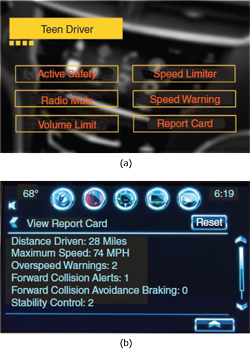|
Handing over the keys to the family car is a leap of faith
that many parents make with their newly licensed teen drivers. In winter 2015,
the 2016 Chevrolet Malibu went on sale with General Motors’ (GM’s) first
application of its new Teen Driver feature that should give parents a bit more
peace of mind. After all, it is a factory-installed hard-wired feature that
cannot be easily disabled (unlike aftermarket devices that plug into onboard
diagnostic ports), and it is not an application that teens can turn on and off
almost at will.
Teen Driver is an optional feature on the 2016 Chevrolet
Malibu mid-level LT model, and it will be a standard feature on the Malibu
Premier model. The system needs to be activated after purchase, but once a
parent turns it on, it stays on and requires a four-digit personal
identification number code to disable it, therein erasing all history and clearing
the screen. 
The Teen Driver feature allows parents to set speed alerts,
limit audio volume, and receive vehicle operating reports. A spokesman for
Chevrolet said, “Parents could use it as a teaching tool with their kids, and
they can discuss and reinforce safe driving habits”.
Teen Driver will not prevent your child from driving above
the speed limit, but it will record the distance traveled, the highest speed
reached, and the number of exceptions to speed parameters. It also monitors the
triggering of safety features, such as antilock brakes, electronic stability
control, forward-collision alert, lane-departure warnings, which often are a
telltale sign of distracted driving.
Teen Driver also prevents parent-selected parameters from
being disabled. Its speed warnings flash when the driver exceeds a preset
limit, adjustable from 40 to 75 mi/h (64–121 km/h). Parents can also set
sound-system volume limits. Using inputs like those shown in Figure a, parents
can create customizable reports that include such things as distance driven,
top speed achieved, preset speed warnings exceeded, stability-control events,
antilock brake events, forward-collision alerts, and auto braking events. A
Teen Driver customized report display, showing events that occurred when a teen
was driving, is shown in Figure b.
In addition, parents can dictate what features can or cannot
be deactivated. Then, control over the activation status of stability control,
parking sensors, blind-spot monitoring, rear cross-traffic alert, forward collision
warning, automatic braking, and traction control can all be set so they cannot
be altered by the teen driver.
Read the full article: IEEE Vehicular Technology Magazine, Volume 11, Number 1, March
2016 |